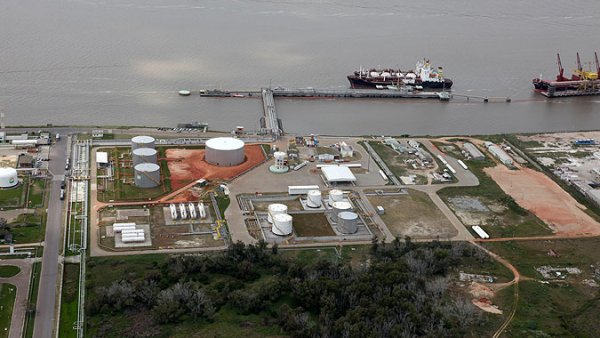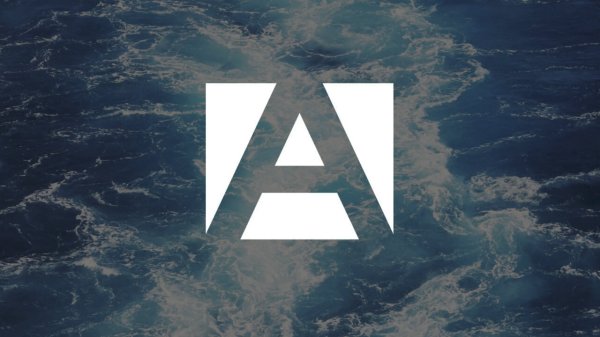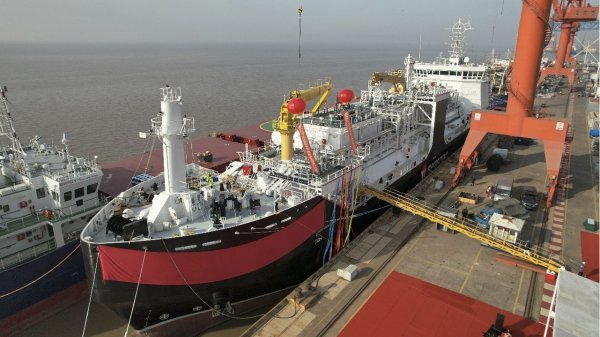Study: 'High market potential' for fuel cell systems
Study concludes that fuel cell technology could substitute 160 GW of auxiliary engines worldwide.
A recent study carried out Germanischer Lloyd (GL) says that fuel cell systems have a 'high market potential' for use in shipping in the future and concludes that the technology could be used to substitute around 160 GW of auxiliary engines worldwide.
The market study was carried out by GL in conjunction with the Hamburg City Administration for Urban Development and Environment.
GL experts examined the technical possibilities, the currently available technology, integration concepts and the legal background for the use of fuel cells on board ships. The target prices for fuel cell systems were also analysed as well as the market size onboard seagoing vessels. In total, approximately 53 percent of the world's merchant fleet was examined.
The study says that five years after finalizing the development of the first systems for commercial shipping, fuel cell systems can be competitive in comparison with traditional diesel engines from an economic point of view - even if the prices for fuel cell systems will be higher.
The first markets identified for the application of fuel cell technology are cruise vessels, RoPax vessels and mega yachts.
As fuel cell systems become more economically competitive, GL says a much larger market would open up for other ship types such as container feeders.
"The study concludes that fuel cell systems have a high market potential in shipping in the future", said Dr Gerd-Michael Würsig, GL's expert for fuel cell technology and one of the authors of the study.
"Today, still some technical challenges have to be overcome. But current and ongoing projects already demonstrate the suitability of fuel cells systems for power generation on board ships."
Eco-concerns, environmental regulations and high energy prices have forced the shipping industry to become more energy efficient with greener vessels. GL says one solution to achieve this goal is the use of fuel cell systems for power generation on board ships.
Apart from the high energy efficiency of fuel cell systems, which is reported to be more than 50 percent, GL says the very low or no emissions (depending on the fuel type) is another an argument in favour of the use of fuel cell technology.
"Furthermore, the modular design and the negligible noises and vibrations give the fuel cell system a big advantage compared to traditional power generation on board ships," GL added.
GL has been involved in developing ships, storage and transfer facilities for hydrogen. It has produced its own guidelines for the use of fuel cells in watercraft, which not only cover fuel cells and fuel systems but also standards for the materials used, ventilation systems, fire-fighting equipment, explosion protection and other safety systems. They also offer guidance on testing the fuel cell system.
The market study was carried out by GL in conjunction with the Hamburg City Administration for Urban Development and Environment.
GL experts examined the technical possibilities, the currently available technology, integration concepts and the legal background for the use of fuel cells on board ships. The target prices for fuel cell systems were also analysed as well as the market size onboard seagoing vessels. In total, approximately 53 percent of the world's merchant fleet was examined.
The study says that five years after finalizing the development of the first systems for commercial shipping, fuel cell systems can be competitive in comparison with traditional diesel engines from an economic point of view - even if the prices for fuel cell systems will be higher.
The first markets identified for the application of fuel cell technology are cruise vessels, RoPax vessels and mega yachts.
As fuel cell systems become more economically competitive, GL says a much larger market would open up for other ship types such as container feeders.
"The study concludes that fuel cell systems have a high market potential in shipping in the future", said Dr Gerd-Michael Würsig, GL's expert for fuel cell technology and one of the authors of the study.
"Today, still some technical challenges have to be overcome. But current and ongoing projects already demonstrate the suitability of fuel cells systems for power generation on board ships."
Eco-concerns, environmental regulations and high energy prices have forced the shipping industry to become more energy efficient with greener vessels. GL says one solution to achieve this goal is the use of fuel cell systems for power generation on board ships.
Apart from the high energy efficiency of fuel cell systems, which is reported to be more than 50 percent, GL says the very low or no emissions (depending on the fuel type) is another an argument in favour of the use of fuel cell technology.
"Furthermore, the modular design and the negligible noises and vibrations give the fuel cell system a big advantage compared to traditional power generation on board ships," GL added.
GL has been involved in developing ships, storage and transfer facilities for hydrogen. It has produced its own guidelines for the use of fuel cells in watercraft, which not only cover fuel cells and fuel systems but also standards for the materials used, ventilation systems, fire-fighting equipment, explosion protection and other safety systems. They also offer guidance on testing the fuel cell system.

|
IMO approves pricing mechanism based on GHG intensity thresholds
Charges to be levied on ships that do not meet yearly GHG fuel intensity reduction targets. |
|
|
|
||

|
VARO Energy expands renewable portfolio with Preem acquisition
All-cash transaction expected to complete in the latter half of 2025. |
|
|
|
||

|
NYK trials biofuel in milestone coal carrier test
Vessel is used to test biofuel for domestic utility company. |
|
|
|
||

|
H-Line Shipping orders LNG bunkering vessel
Vessel with 18,000-cbm capacity to run on both LNG and MDO. |
|
|
|
||

|
How to engineer and manage green shipping fuels | Stanley George, VPS
Effective management strategies and insights for evolving fuel use. |
|
|
|
||

|
Swedish government bans scrubber wastewater discharges
Discharges from open-loop scrubbers to be prohibited in Swedish waters from July 2025. |
|
|
|
||

|
MAN Energy Solutions achieves 100% load milestone for ammonia engine
Latest tests validate fuel injection system throughout the entire load curve. |
|
|
|
||

|
Petrobras secures ISCC EU RED certification for B24 biofuel blend at Rio Grande
Blend consisting of 24% FAME is said to have been rigorously tested to meet international standards. |
|
|
|
||

|
Stolt-Nielsen to fully control Avenir LNG with acquisition
Share purchase agreement to buy all shares from Golar LNG and Aequitas. |
|
|
|
||

|
Bureau Veritas supports launch of CIMC SOE's LNG bunkering vessel
Handover of Seaspan Energy's cutting-edge 7,600-cbm vessel completed. |
|
|
|
||
Related Links
- · GL class for gas-fuelled ship [Insights]
- · Plan to launch first LNG-powered container ship [Insights]
- · Wärtsilä to convert ship to LNG propulsion [Insights]
- · Gas as ship fuel - a clean alternative to heavy fuel oil [Insights]
- · Germany [Directory]

